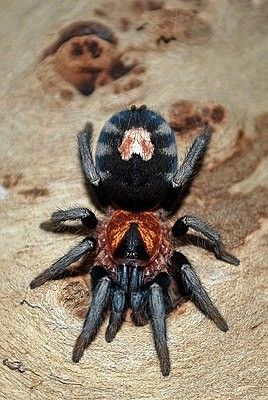Buy juvenile tarantula online
Juvenile tarantulas are a dynamic and critical stage in Theraphosidae development—larger and more stable than slings, but not yet showing full adult morphology or sexual maturity. They’re ideal for intermediate keepers, educational setups, and long-term breeding plans. Here’s a full breakdown tailored to your level:
🕷️ Juvenile Tarantula Profile
| Trait | Details |
|---|---|
| Instar Range | Typically 4th–7th instar (species-dependent) |
| Size | ~2.5–6 cm (1–2.5 inches) leg span |
| Molting Frequency | Every 3–6 months, depending on species and feeding |
| Sexual Maturity | Not yet reached—usually 2–4 molts away |
| Behavior | More predictable than slings; feeding regularly; less fragile |
Juveniles begin to show species-specific coloration and behavior, making them easier to identify and care for than spiderlings.
🧬 Species Examples in Juvenile Stage
- Brachypelma hamorii (Mexican Red Knee)
- Juveniles show orange patella bands and a calm temperament
- Hardy and slow-growing—great for beginners
- Grammostola pulchra (Brazilian Black)
- Juveniles are velvety black and robust
- Excellent for display and long-term projects
- Poecilotheria regalis (Indian Ornamental)
- Arboreal juveniles show early patterning and speed
- Require vertical setups and humidity control
- Pamphobeteus mascara (Mascara Bird Eater)
- Juveniles already show iridescent hues and a bold feeding response
- Popular in exotic morph trade
You can browse a wide range of juvenile species on.
🏡 Enclosure Setup
- Tank Size: 1–5 gallons, depending on size
- Substrate: 2–4 inches of coco fiber, peat moss, or topsoil
- Temps: 72–82°F (22–28°C)
- Humidity: 60–80%, species-dependent
- Hides: Cork bark, leaf litter, burrow zones
- Water: Shallow dish or misting
Juveniles benefit from naturalistic setups that support burrowing or climbing, depending on genus.
🍽️ Feeding & Molting
- Diet:
- Small crickets, roach nymphs, mealworms
- Prey should be no larger than the tarantula’s abdomen
- Feeding Frequency: Every 5–7 days
- Molting Signs:
- Refusal to eat
- Darkening of the abdomen
- Increased hiding behavior
Juveniles molt more frequently than adults, supporting rapid growth.
🧠 Behavior & Temperament
- Nocturnal: Most active at night
- Handling: Not recommended—still skittish and fragile
- Temperament: Species-dependent; some are bold, others reclusive
- Social Behavior: Some juveniles show brief gregarious phases near maternal burrows
They’re ideal for behavioral observation, growth tracking, and educational setups.
Legal & Ethical Notes
- Always source captive-bred juveniles with documentation
- Avoid wild-caught imports—juveniles are often poached due to high demand
- Never release into the wild—can disrupt native ecosystems
- Buy juvenile tarantula online






Reviews
Clear filtersThere are no reviews yet.